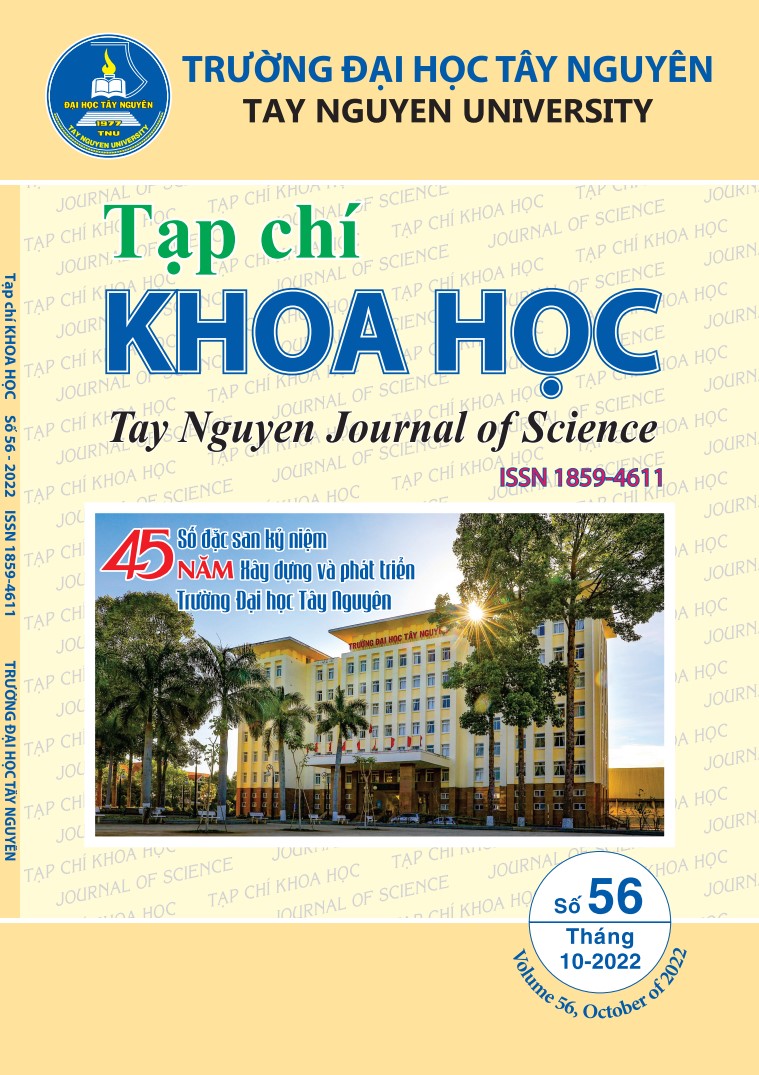Manufacturing an IoT device for automatic control of total disolved solids of nutritient concentration for plants on aeroponic, hydroponic systems
Main Article Content
Manufacturing an IoT device for automatic control of total disolved solids of nutritient concentration for plants on aeroponic, hydroponic systems
Tóm tắt
Controlling TDS (Total Dissolved Solids) in aeroponic and hydroponic systems is very important for plant growth. Due to the reflux of the nutrient solution after passing through the tube system containing the medium, the concentration of nutrients decreases. Currently, measuring nutrient concentration and adding nutrients to the solution is manually done by farmers. Therefore, we manufactured an IoT (Internet of Things) device with acceptable accuracy to control nutrient concentration. In testing, the TDS sensor has a relative errror of ~ 1.2 %. The IoT device can automatically turn on the pump to provide more nutrients when its TDS is below the TDS threshold and turn off the pump when the concentration has reached the threshold. With our system, users can directly enter the TDS threshold using the matrix keypad or via the Blynk smartphone application.
Article Details

Tác phẩm này được cấp phép theo Giấy phép quốc tế Creative Commons Attribution-NonCommercial-NoDeri Phái sinh 4.0 .
Tài liệu tham khảo
- Dfrobot (2020). Gravity analog TDS sensor meter for arduino, Retrieved from: https://wiki.dfrobot.com/Gravity__Analog_TDS_Sensor___Meter_For_Arduino_SKU__SEN0244
- Gopinath P., P. Irene Vethamoni and M. Gomathi (2017). Aeroponics soilless cultivation system for vegetable crops, Chemical Science Review and Letters, 6(22), 838-849.
- Konstantinos G. Arvanitis, and Eleni G. Symeonaki (2020), Agriculture 4.0: The Role of Innovative Smart Technologies Towards Sustainable Farm Management, The Open Agriculture Journal, 14, 130-135, DOI: 10.2174/1874331502014010130.
- Maheshwari, K., A. Chakraborty (2021). Water Quality Monitoring System Implemented With IoT. International Journal of Emerging Trends in Engineering Research, 9(7), 1020-1024.
- Susanti N. D., D. Sagita, I. Fajar Apriyanto, C. E. Wahyu Anggara, D. Andy Darmajana, A. Rahayuningtyas (2022). Design and Implementation of Water Quality Monitoring System (Temperature, pH, TDS) in Aquaculture Using IoT at Low Cost. Advances in Biological Sciences Research, 16, 7-11.
- Suseno J. E., M. F. Munandar, A. S. Priyono (2019). The control system for the nutrition concentration of hydroponic using web server, Journal of Physics: Conference Series, 1524 (2020) 012068, doi:10.1088/1742-6596/1524/1/012068
- Velazquez-Gonzalez, R. S., Garcia-Garcia, A. L., Ventura-Zapata, E., Barceinas-Sanchez, J.D.O., SosaSavedra, J.C (2022). A review on hydroponics and the technologies associated for medium- and smallscale operations. Agriculture, 12, 646, Retrieved from: https://doi.org/10.3390/agriculture12050646
- ZipGrow (2021). Best Crops For Hydroponics, A Reference Guide For Modern Farmers. Retrieved from: https://anishinabekagriculture.ca/wp-content/uploads/2021/06/Zipgrow-Primer.pdf



